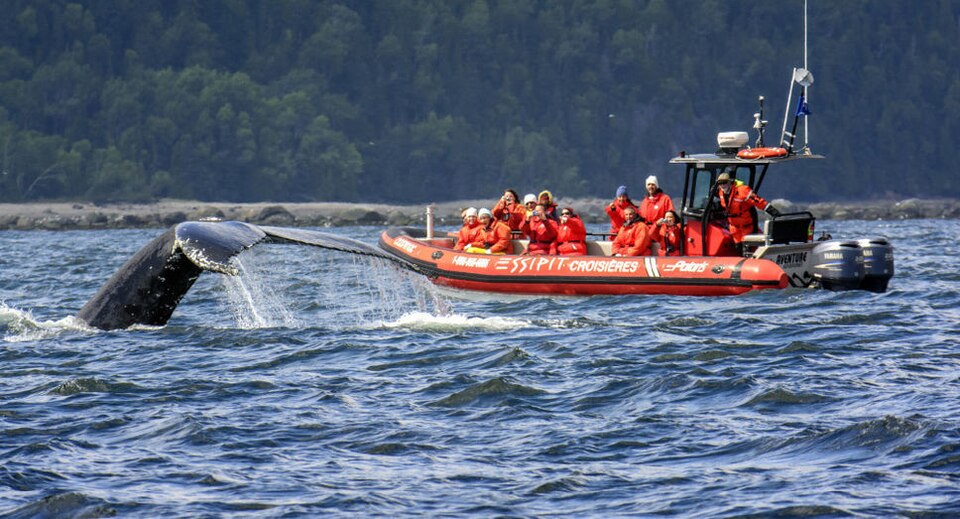A Collision between an inflatable boat and a whale: security gaps

Photo courtesy, cruise Essipit
Croisières Essipit operates six rubber boats in the context of whale-watching cruises on the North Shore.
Stephanie Gendron
Tuesday, 27 march 2018 11:45
UPDATE
Tuesday, 27 march 2018 11:49
Look at this article
LES BERGERONNES | lack of safety management on board the inflatable boat that would be involved in a collision with a whale off the coast of Bergeronnes in 2016, making half-a-dozen injured, is at the origin of the accident, according to the Bureau of transportation safety.
- READ ALSO: Two people ejected from a boat following a collision with a whale
Nine passengers were taking part in a whale-watching trip aboard an inflatable boat when it collided with an unidentified object, possibly a whale.
“Given the many tasks that needed to accomplish the operator, in particular, to animate the tour and monitor the speed and position of the boat, he did not see the whale that was very close”, one can read in the report of the Office of the transportation safety board of Canada (TSB).
Following the impact, two people fell into the water, which the operator of the Adventure 6 Cruises Essipit. This man suffered from hypothermia, was wounded in the head, arm, and shoulder, and keeps the accident a disorder of post-traumatic stress disorder. Several passengers were also injured.
The passengers did not know how to use the lifeline or the equipment used to send distress signals. One of them dialed 911 with her cell phone and another restarted the engine to retrieve the passengers fell into the water.
“The vessel was not equipped with a device for recovery of person in the sea proper, and it took several attempts to succeed to hoist people on board. These maneuvers have caused additional injuries to one of them”, concludes one also.
For better security
The inspectors believe that the accident reveals safety deficiencies in the local activities of observation of whales in the marine park of Saguenay–Saint-Laurent. Currently, there is no regulatory requirement for companies to adopt a system of safety management in good and due form, says it.
“There were failures [in terms of] maritime safety and security,” added the spokesperson for the TSB François Dumont. “Transport Canada does not inspect those boats. The people who operate the boats are not subject matter experts and, in good faith, they thought that they were in compliance.”
In the wake of the accident, and after having received a notice of safety TSB’s, Croisières Essipit has refurbished its safety equipment and has updated its presentation on the safety measures presented to the passenger prior to departure.
“This report will help clarify the grey areas and blurry that currently exist in regulation,” said Marc Chaloult, spokesman for Cruises Essipit.
“It is virtually impossible for an operator to boats, passenger tires find their way through a tangle of regulation, the jumble of administrative and often competing interests created by the departments and agencies involved”, he adds. He gives the example of a contraction to the effect that one would require on the one hand the wearing of flotation devices and, on the other hand, the use of life belts so that the two may not be worn simultaneously.
From 2006 to 2016, eight maritime events that occurred in the course of field trips to observe marine mammals in the parc marin du Saguenay–Saint-Laurent have been reported to the TSB



